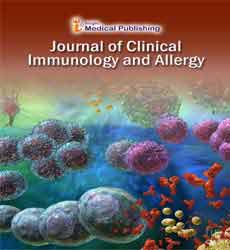Abstract
Influence of Ventilatory Inefficiency over Exercise Capacity in Smokers and Patients with Pulmonary Emphysema: A Cross Sectional Study
Background: Increased VE/VCO means Ventilatory inefficiency to clear CO.
Objective: Determine the influence of Ventilatory inefficiency over exercise capacity in smokers and patients with pulmonary emphysema.
Methods: A cardiopulmonary stress test was performed in 56 patients. Influence of VE/VCO over Oxygen consumption (VO), Power (W) Breathing reserve (BR), expiratory flow limitation (EFL) and Inspiratory capacity (IC) were determined. Surrogate cardiac parameters Oxygen pulse and Circulatory power were also assessed.
Results: Patients with pulmonary emphysema, with spirometric severity corresponding to GOLD 1-3 (2011 classification), presented a rise in VE/VCO, with reduction in VO and W. Half of the patients presented dynamic hyperinflation. Linear regression showed a reduction of VO, W and BR related with the increased VE/VCO (p=0.001, 0.000 and 0.028). Patients with VE/VECO >34, showed a reduction in Oxygen pulse and Circulatory power (P=0.037 and 0.019). In multiple regressions including the independent variables body mass index, EFL, IC and VE/VCO over VO and W, only VE/VCO demonstrated to be significant (P=0.034 and 0.024).
Conclusion: Increased VE/VCO was seen in patients and was correlated with a decreased exercise capacity independent of hyperinflation on multivariate analysis. Patients with VE/ VCO over 34, presented a reduction of surrogate parameters of cardiac function.
Author(s):
Iván R Caviedes, Rodrigo Soto and Claudio Silva
Abstract | Full-Text | PDF
Share this

Google scholar citation report
Citations : 16
Journal of Clinical Immunology and Allergy received 16 citations as per google scholar report
Abstracted/Indexed in
- Google Scholar
- Directory of Research Journal Indexing (DRJI)
- WorldCat
- Publons
- Secret Search Engine Labs
Open Access Journals
- Aquaculture & Veterinary Science
- Chemistry & Chemical Sciences
- Clinical Sciences
- Engineering
- General Science
- Genetics & Molecular Biology
- Health Care & Nursing
- Immunology & Microbiology
- Materials Science
- Mathematics & Physics
- Medical Sciences
- Neurology & Psychiatry
- Oncology & Cancer Science
- Pharmaceutical Sciences


